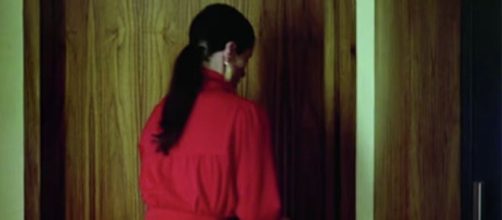The announcement of an exhibit called "Doors" opening at White Cube Gallery in London on Sept. 6 comes with a mixed message. The press release says it's "a montage of screen stars entering and leaving rooms."
Based on the website of exhibiting artist Christian Marclay, the show is not about coming and going but about doors as "sculptural." He calls them "mental architecture."
Clearly fixed on his subject as stand-alone objects, Marclay's exhibit even includes a series of sculptures in the form of doors.
'Mental architecture'?
But if doors are a way to the other side, they are less about building parts and more about pathways forward.
A montage of movie actors opening or closing them, or a series of sculptures in that form, makes them self-limiting as ends in themselves.
The belief that doors are means of transition is as old as the seven hills of Rome. The ancients even had a god of door that stood for transition named Janus.
A door, then, is a loaded word, charged with meaning depending on whether it's open or closed. When shut, it can signal separation, perhaps loneliness. Open, it can stand for a welcome and more – a great adventure.
Consider the adventures that Lewis Carroll recounts in "Alice in Wonderland," which is all about stepping through various doors. The rabbit hole is one.
That's when Alice falls into a room full of locked doors except for a tiny one through.
How she gets the little passageway is a long story that includes a magic potion that shrinks her size and leads to a magical garden and Wonderland.
You can see a similar vision in Giovanni di Paolo's Renaissance painting "St. John Entering the Wilderness." You see him exiting a doorway and stepping out into a vast fantasy world.
Di Paolo suggests the fantasy world when he abandons the scale and proportion of natural forms to create a dream world as real-looking as every day.
And when it comes to doors as transitions, there can be no better contemporary example than Diana Gabaldon's novel "Outlander" – a historical fantasy about time travel.
Dreamland
The portal in Gabaldon's story is a towering block of stone that serves as a passageway to a distant past.
Her time travel tales have been turned into a television series that has continued for six seasons and counting.
Doors have been a subject of inspiration not only for painters and novelists but poets, too. I/ thinking of a stanza from Robert Creely's poem "Doors," which seems to channel the time travel theme in "Outlanders" unintentionally.
"The door in the wall leads to the garden/where in the sunlight sit/the Graces in long Victorian dresses, of which my grandmother had spoken."
White Cube Gallery says that Marclay spent ten years amassing the movie clips in which a door opens or closes. But by the press release and his website, the exhibit doesn't get past the front door.


